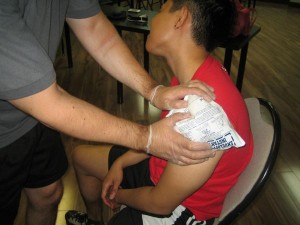Brian Johns was a worker for Rohm and Haas, owned by the largest chemical company in the United States, when he suffered chemical burns over 65% of his body when Deer Park plant exploded. Mortifying enough, a representative from the company tried to tell the doctors that Johns had simply encountered really hot water which caused his burns. But when a slip of pH paper was placed on Johns’ skin, it had turned red, which indicated the presence of acid on the skin of the victim. Brian Johns passed away due to the chemical burns his body sustained.
Chemical burns befall when a living tissue is exposed to a corrosive substance such as strong acids and bases. The main irritant types and/ or corrosive product are acids, bases, oxidizers, solvents, and reducing agents. In addition, chemical weapons may also cause chemical burns. A variety of common household products may also result to chemical burns when not handled properly. These include bleach, metal cleaners, concrete mix, pool chlorinators and toilet bowl cleaners.It is strongly suggested that these chemicals be labeled on the containers.
These chemical burns may or may not occur immediately upon contact. Additionally, they need no source of heat, may not be easily evident or visible, diffuse into the tissue and cause damage under the skin without noticeable damage to the skin surface. These chemicals may lead to reaction on the skin area affected (localized), throughout the body (systemic) or both.
The symptoms of the chemical burn depend on the type of exposure. Symptoms include abdominal pain, difficulty in breathing, bright red or bluish skin and lips (cyanosis), seizures (convulsions), dizziness, headache, allergic reaction symptoms (such as itching, swelling, nausea, and weakness), irritability, pain in the affected area, blisters or burns on the skin and loss of consciousness.
To treat burns that may be rinsed with water, flush the area with gentle stream of water for at least 20 minutes. Make sure that the water does not flow onto another part of the body. Do not use hard spray on the injured area as it may cause further damage. If the victim is able to, advise him/ her to remove any trace of the chemical substance by taking off any clothing or jewelries. If possible, wear gloves. If the burning sensation continues, continue flushing the burned area with flowing water for 10 to 15 minutes. Using dry sterile gauze or clean cloth, the burnt area may be covered.
If the burns cannot be rinsed off by water, there are several other methods of 
Wearing protective gear is the best way to protect self from any chemical burns. However, accidents are not always avoidable and can happen at any time. It is better to be prepared by taking first aid classes to ensure the safety of everyone, especially those working in laboratories, hence, it is highly recommended for scientists to take first aid lessons.